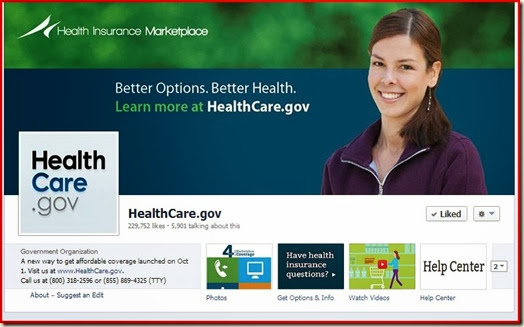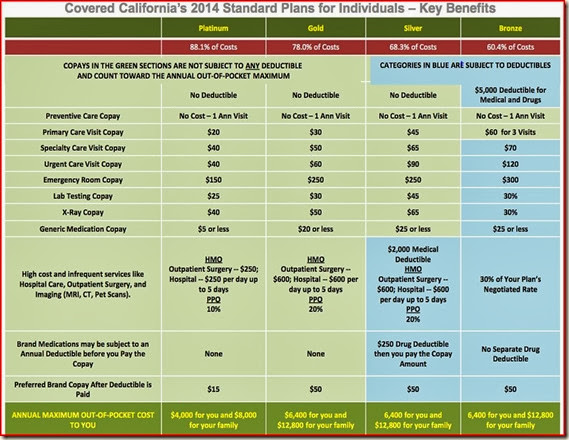There are those on both sides of the argument as to whether the Affordable Care Act will flourish or die on the vine.
Unfortunately the ACA has been linked with ‘Obama” and is more commonly called Obama care.
Recently in a street level survey Watters of the FOXNEWS channel reported that many people thought Obama care and the Affordable Care Act were two different laws. When asked which was better, some responded Obama care since it had President Obama’s name on it.
Point: Obama’s name gives the law high visibility, if it succeeds he will be remembered for his signature accomplishment…..good or bad.
Counterpoint: President Obama’s name attached to any bill or law invited political exploitation and the merits of the plan are soon forgotten.
Viewpoint: Obama care Will Survive Its Botched Rollout
Point: The HealthCare.gov debacle, and the cover-up and blame game that followed it, have reinvigorated Obama care's critics, who argue anew that the law represents expensive government overreach. So it's worth stepping back from the website mess to remember the deeper problems that made this law necessary in the first place -- and, by extension, why the issues with HealthCare.gov, which seem so important today, pale in comparison.
Counterpoint: The Health Benefit Exchanges are not the Affordable Care Act, however it was promoted as a key catalyst for enrolling previously uninsured among the uninsurable, young adults, and people just above the poverty level with large subsidies for premium payments.
Point: The Websites are a disaster, and much hype was broadcast about it’s opening, ready or not, even when those responsible knew it was not ready for prime-time.
Counter-point: Statements made in the recent past by HHS and President Obama included:
HBX would be ready
If you like your doctor or insurance plan You will not lose their doctor, hospital, and no one would lose their insurance plan. (read the fine print)….
If these major statement were incorrect, a lie or a deception who would or should trust anything coming from the executive branch, or HHS.? (Fool me once, fool me twice, fool me three times…well you already know the answer)
Point: If the HBX is considered fairly simple to build and it is a disaster, how will HHS manage to roll out the rest of the ACA which is far more complicated and involves hundreds of insurers, thousands of doctors and hospitals? This part of the ACA requires successful completion of each phase for the law to function without serious damage to health care financing but also to the economy in which health care spending is 17% of GDP or 1/6th of the economy.
Counterpoint: No problems….according to proponents the law will work because it is a good thing to counteract all the bad things about our health system.
The first problem with the status quo can't be repeated often enough: The U.S. spent 17.7% of its gross domestic product on health care in 2011, 50% more than the next highest among countries in the Organization for Economic Co-Operation and Development. The average for developed countries is less than 10%. Yet unlike every other developed country, a big chunk of Americans didn't have insurance -- almost one in six Americans last year.
Of course, for those with access to care, the U.S. is a good place to be sick. Americans received 103 MRI exams per 1,000 people in 2011, more than any other rich country, including Belgium (77), Spain (66) and Canada (50). The discrepancy was even higher for CT scans. And deaths from cancer are lower in any given year than for many rich countries -- 194 for every 100,000 people in 2010, which was better than the U.K., Italy, Germany, the Netherlands and Denmark.
Americans on average get less care and die younger, despite spending more as a country. As Eduardo Porter noted in The New York Times last week, the U.S. has an alarmingly high infant mortality rate -- higher than any OECD nation, with the exception of Mexico and Turkey. And not just a little bit higher. In 2011, 6.1 infants died for every 1,000 live births. The corresponding figures were 2.3 in Japan; in Sweden, 2.1; and in Iceland, 0.9.
The U.S. is also lagging at the opposite end of life. An American born in 2011 can expect to live 78.7 years -- less than somebody born in almost any European country, and 26th out of 36 in the OECD.Point:
You could also measure the inadequacy of American health care through the amount of health-care resources that are available to the population as a whole. The U.S. has fewer hospital beds per person than most developed nations; a fraction as many psychiatric care beds; and trails every European nation in medical graduates, at 6.6 per 100,000 people. (Germany and the UK have almost twice as many.)
Counterpoint:
The reason for this is the two decade old campaign to save money by forcing smaller and less efficient hospitals to merge, or close. Rising overhead coupled with another reimbursement paradigm change ‘the DRG or diagnostic related group. The DRG mandates a set fee by disease category, not what occurs during the hospitalization, nor the actual cost of the events. (Another one size fits all government mandate)
Waiting for a hospital bed in Beijing. Are we headed for this?

The entire article from Health Benefit Exchange can be read here;
Attribution: Health Benefit Exchange Publication
Technorati Tags: affordable care act,health benefit exchange failures,aca,obamacare,healthcare law,watters,foxnews,hhs






